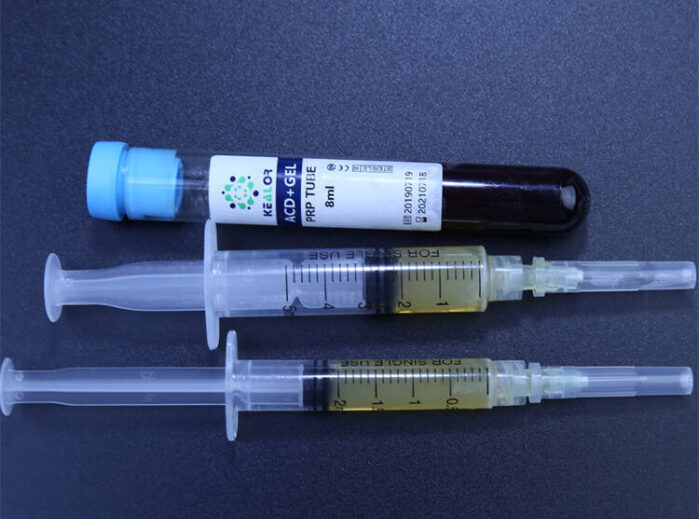Platelet-rich plasma (PRP) is a concentrated solution of platelets derived from a patient’s own blood, which contains high levels of growth factors that promote tissue regeneration and healing. PRP has been used in a variety of medical and cosmetic procedures, including sports medicine, orthopedics, dermatology, and dentistry.
The isolation of PRP involves several steps, including the collection of blood, processing of the blood, and separation of the PRP from the other components of the blood. Here is a general protocol for isolating PRP:
Preparation of equipment and materials:
Antiseptic solution (e.g. 70% isopropyl alcohol)
Sterile gloves and gauze
Blood collection kit (e.g. vacutainer system)
Centrifuge with appropriate rotor and tubes
PRP separation kit (optional)
3.8% sodium citrate solution or other anticoagulant
Patient preparation:
Obtain informed consent
Ensure the patient is well-hydrated
Confirm the absence of any bleeding disorders or medication use that may affect platelet function
Blood collection:
Clean the venipuncture site with antiseptic solution and allow to dry
Insert the needle into the vein and collect the desired amount of blood into a vacutainer tube containing anticoagulant (usually 3.8% sodium citrate solution)
Gently invert the tube to mix the blood and anticoagulant
Label the tube with patient information and the date and time of collection
PRP processing:
Place the blood tube(s) into the centrifuge and spin at a specific speed and time to separate the blood into layers. The centrifugation conditions may vary depending on the specific protocol being used.
Carefully remove the plasma layer using a sterile pipette and transfer to a separate tube or container.
If using a PRP separation kit, follow the manufacturer’s instructions for processing the plasma to obtain the PRP concentrate.
Final steps:
Assess the final volume and platelet concentration of the PRP
Store the PRP in an appropriate container at the recommended temperature and conditions
Use the PRP within the recommended time frame based on the specific procedure or application
It is important to note that the specific protocol for PRP isolation may vary depending on the intended use and the preferences of the clinician. Therefore, it is essential to follow the protocol recommended by the manufacturer or established within your clinical setting. Additionally, proper aseptic technique should be maintained throughout the entire process to minimize the risk of contamination and infection.








